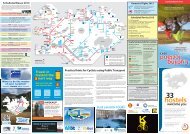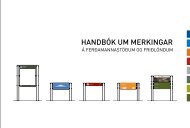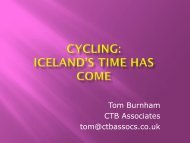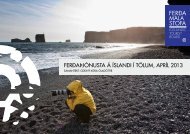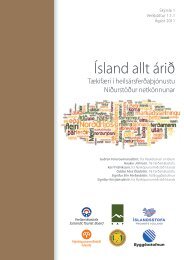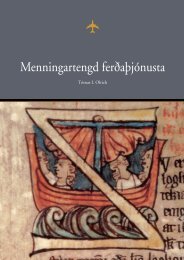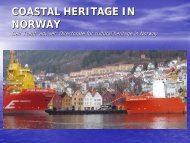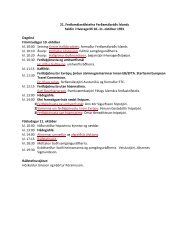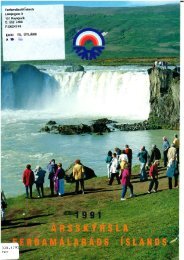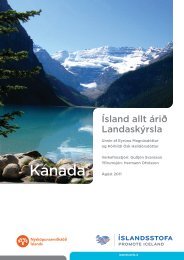Untitled
Untitled
Untitled
You also want an ePaper? Increase the reach of your titles
YUMPU automatically turns print PDFs into web optimized ePapers that Google loves.
“[s]ocietal unification needs no factors outside its component elements, the<br />
individuals” (Simmel 1971, p. 7).<br />
As true as it is that social science and social theory have been<br />
articulated and enacted on the basis of a separately existing social, a<br />
fracture in this ontology can easily be caused. In fact, it is provided by the<br />
material turn in social science. What is enough is to bring in what we in<br />
everyday language refer to simply as “things”. Tourism is actually full<br />
them and every single tourist is in practice surrounded by them.<br />
Nevertheless, in spite of this we reach the conclusion that things have in<br />
fact not received a corresponding amount of recognition in tourism theory.<br />
This strange paradoxical state of affairs has been spelled out by Franklin<br />
(2003, p. 97):<br />
In tourism theory tourist things are both omnipresent and impotent (or<br />
inert, passive). Tourist things tend to be significant only in what they<br />
represent; as a meaningful set of signs and metaphors (of social things,<br />
mainly ideas, values, discourses etc) (Franklin 2003, p.97).<br />
One principal reason why “tourist things” have not been regarded as<br />
significant in tourism theory is a preference for the reference plane of the<br />
social when projecting tourism phenomena. As we have shown elsewhere,<br />
the consequence has been that things have been either neglected or<br />
conceptually reduced to passive and inactive material objects, for example<br />
to those touristic things that tourists gaze upon in order to decode the<br />
socio-cultural meanings they are supposed to represent.<br />
Yet, there are other ways of theorizing things than reducing them to<br />
mute passive material objects with only extensive properties whose<br />
significance should be measured and realized by the social. As both more<br />
and less than mere matter, things may also be distinguished as significant<br />
in themselves. As indicated in terms of images above, they may be<br />
conceived of as equipped with material agency that enables them to<br />
become “active agents in the production of tourism” (Franklin 2003, p.<br />
98). Those simple things may also be understood as “hybrids”, phenomena<br />
defiant of purified ontological classification, whose present presence has<br />
been haunting social science theorizations for some time now. According<br />
to Urry:<br />
95



